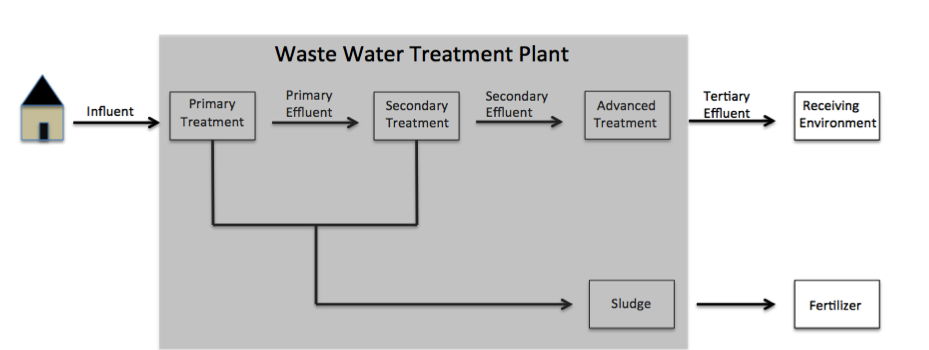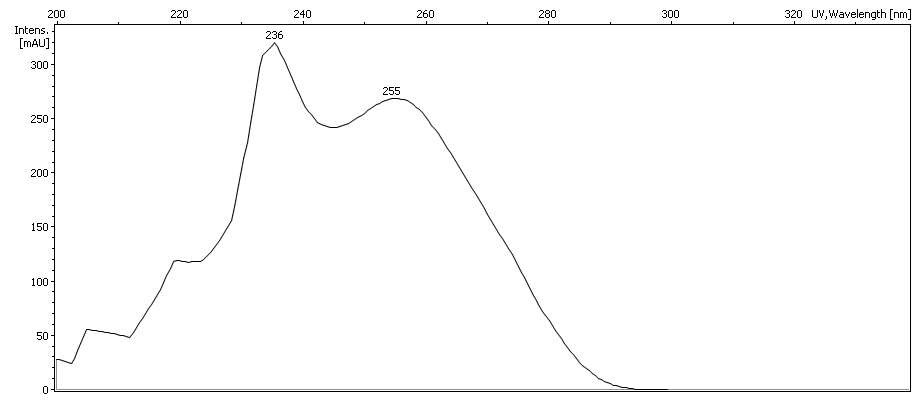|
Nipastat
Nipastat is the brand name for a mixture of parabens (parahydroxybenzoates) by Clariant, a chemicals company. Parabens are a type of compound used as a preservative in pharmaceuticals, cosmetics, and food. Nipastat is a white powder at room temperature, but is typically dissolved into a liquid product. Nipastat acts to prevent the growth of bacteria, mold, and yeast. Nipastat is a mixture of five common parabens: methylparaben (50-60%), butylparaben (12-17%), ethylparaben, (13-18%) propylparaben Propylparaben, the ''n''-propyl ester of ''p''-hydroxybenzoic acid, occurs as a natural substance found in many plants and some insects, although it is manufactured synthetically for use in cosmetics, pharmaceuticals, and foods. It is a member ... (6-9%), and isobutylparaben (6-9%). When Nipastat is added to a product, the recommended final weight of Nipastat is between 0.05% and 0.3% of the total weight. Nipastat is stable at a range of pHs between 4 and 8. [...More Info...] [...Related Items...] OR: [Wikipedia] [Google] [Baidu] |
Clariant
Clariant AG is a Swiss multinational speciality chemicals company, formed in 1995 as a spin-off from Sandoz. The company is focused on four business areas: care chemicals (consumer and industrial); catalysis; natural resources (oil & mining, minerals); and plastics & coatings. Headquartered in Muttenz, Switzerland, the public company encompasses 110 operating companies in 53 countries. Major manufacturing sites are located in Europe, North America, South America, China, and India. In 2015, sales from continuing operations were 5.8 billion CHF. European markets account for about one-third of sales, while Asia-Pacific, North America and Latin America account for about one-fifth each. Net income in 2015 was 227 million CHF, while EBITDA was 853 million CHF. The company has sales of around US$6 billion. Headquarters are officially in Muttenz, but most central functions are officed in a dedicated corporate centre in nearby Pratteln, both near Basel, Switzerland. Clariant's four busine ... [...More Info...] [...Related Items...] OR: [Wikipedia] [Google] [Baidu] |
Parabens
Parabens are a class of widely used preservatives in cosmetic and pharmaceutical products. Chemically, they are a series of parahydroxybenzoates or esters of parahydroxybenzoic acid (also known as 4-hydroxybenzoic acid). Parabens are effective preservatives in many types of formulas. These compounds, and their salts, are used primarily for their bactericidal and fungicidal properties. They are found in shampoos, commercial moisturizers, shaving gels, personal lubricants, topical/parenteral pharmaceuticals, suntan products, makeup, and toothpaste. They are also used as food preservatives. Certain parabens have been linked to cancer. Mode of action Parabens are active against a broad spectrum of microorganisms. However, their antibacterial mode of action is not well understood. They are thought to act by disrupting membrane transport processes or by inhibiting synthesis of DNA and RNA or of some key enzymes, such as ATPases and phosphotransferases, in some bacterial species. Prop ... [...More Info...] [...Related Items...] OR: [Wikipedia] [Google] [Baidu] |
Preservative
A preservative is a substance or a chemical that is added to products such as food products, beverages, pharmaceutical drugs, paints, biological samples, cosmetics, wood, and many other products to prevent decomposition by microbial growth or by undesirable chemical changes. In general, preservation is implemented in two modes, chemical and physical. Chemical preservation entails adding chemical compounds to the product. Physical preservation entails processes such as refrigeration or drying.Erich Lück and Gert-Wolfhard von Rymon Lipinski "Foods, 3. Food Additives" in ''Ullmann's Encyclopedia of Industrial Chemistry'', 2002, Wiley-VCH, Weinheim. Preservative food additives reduce the risk of foodborne infections, decrease microbial spoilage, and preserve fresh attributes and nutritional quality. Some physical techniques for food preservation include dehydration, UV-C radiation, freeze-drying, and refrigeration. Chemical preservation and physical preservation techniques are som ... [...More Info...] [...Related Items...] OR: [Wikipedia] [Google] [Baidu] |
Bacteria
Bacteria (; singular: bacterium) are ubiquitous, mostly free-living organisms often consisting of one biological cell. They constitute a large domain of prokaryotic microorganisms. Typically a few micrometres in length, bacteria were among the first life forms to appear on Earth, and are present in most of its habitats. Bacteria inhabit soil, water, acidic hot springs, radioactive waste, and the deep biosphere of Earth's crust. Bacteria are vital in many stages of the nutrient cycle by recycling nutrients such as the fixation of nitrogen from the atmosphere. The nutrient cycle includes the decomposition of dead bodies; bacteria are responsible for the putrefaction stage in this process. In the biological communities surrounding hydrothermal vents and cold seeps, extremophile bacteria provide the nutrients needed to sustain life by converting dissolved compounds, such as hydrogen sulphide and methane, to energy. Bacteria also live in symbiotic and parasitic relationsh ... [...More Info...] [...Related Items...] OR: [Wikipedia] [Google] [Baidu] |
Mold (fungus)
A mold () or mould () is one of the structures certain fungi can form. The dust-like, colored appearance of molds is due to the formation of spores containing fungal secondary metabolites. The spores are the dispersal units of the fungi. Not all fungi form molds. Some fungi form mushrooms; others grow as single cells and are called microfungi (for example yeasts). A large and taxonomically diverse number of fungal species form molds. The growth of hyphae results in discoloration and a fuzzy appearance, especially on food. The network of these tubular branching hyphae, called a mycelium, is considered a single organism. The hyphae are generally transparent, so the mycelium appears like very fine, fluffy white threads over the surface. Cross-walls (septa) may delimit connected compartments along the hyphae, each containing one or multiple, genetically identical nuclei. The dusty texture of many molds is caused by profuse production of asexual spores ( conidia) formed by di ... [...More Info...] [...Related Items...] OR: [Wikipedia] [Google] [Baidu] |
Yeast
Yeasts are eukaryotic, single-celled microorganisms classified as members of the fungus kingdom. The first yeast originated hundreds of millions of years ago, and at least 1,500 species are currently recognized. They are estimated to constitute 1% of all described fungal species. Yeasts are unicellular organisms that evolved from multicellular ancestors, with some species having the ability to develop multicellular characteristics by forming strings of connected budding cells known as pseudohyphae or false hyphae. Yeast sizes vary greatly, depending on species and environment, typically measuring 3–4 µm in diameter, although some yeasts can grow to 40 µm in size. Most yeasts reproduce asexually by mitosis, and many do so by the asymmetric division process known as budding. With their single-celled growth habit, yeasts can be contrasted with molds, which grow hyphae. Fungal species that can take both forms (depending on temperature or other conditions) are ca ... [...More Info...] [...Related Items...] OR: [Wikipedia] [Google] [Baidu] |
Methylparaben
Methylparaben, also methyl paraben, one of the parabens, is a preservative with the chemical formula CH3(C6H4(OH)COO). It is the methyl ester of ''p''-hydroxybenzoic acid. Natural occurrences Methylparaben serves as a pheromone for a variety of insects and is a component of queen mandibular pheromone. It is a pheromone in wolves produced during estrus associated with the behavior of alpha male wolves preventing other males from mounting females in heat. Uses Methylparaben is an anti-fungal agent often used in a variety of cosmetics and personal-care products. It is also used as a food preservative and has the E number E218. Methylparaben is commonly used as a fungicide in ''Drosophila'' food media at 0.1%. To ''Drosophila'', methylparaben is toxic at higher concentrations, has an estrogenic effect (mimicking estrogen in rats and having anti-androgenic activity), and slows the growth rate in the larval and pupal stages at 0.2%. Safety There is controversy about whether ... [...More Info...] [...Related Items...] OR: [Wikipedia] [Google] [Baidu] |
Butylparaben
Butylparaben, or butyl ''p''-hydroxybenzoate, is an organic compound with the formula . It is a white solid that is soluble in organic solvents. It has proven to be a highly successful antimicrobial preservative in cosmetics. It is also used in medication suspensions, and as a flavoring additive in food. Natural occurrence Members of the paraben family are found in fruit and vegetable products, such as barley, flax seed, and grapes. Butylparaben has also been found to be produced in some microorganisms including '' Microbulbifer ''. Preparation Butylparaben is prepared by the esterification of 4-hydroxybenzoic acid with 1-butanol in the presence of an acid catalyst such as sulfuric acid. It is produced industrially. Uses and reactions Butylparaben is one of the most common bactericidal/fungicidal additives in cosmetics. It has been used in cosmetic products since the 1940s and in pharmaceutical products since 1924. The popularity of butylparaben in these products is due ... [...More Info...] [...Related Items...] OR: [Wikipedia] [Google] [Baidu] |
Ethylparaben
Ethylparaben (ethyl ''para''-hydroxybenzoate) is the ethyl ester of ''p''-hydroxybenzoic acid. Its formula is HO-C6H4-CO-O-CH2CH3. It is a member of the class of compounds known as parabens. It is used as an antifungal preservative. As a food additive, it has E number E214. Sodium ethyl ''para''-hydroxybenzoate, the sodium salt Salt is a mineral composed primarily of sodium chloride (NaCl), a chemical compound belonging to the larger class of salts; salt in the form of a natural crystalline mineral is known as rock salt or halite. Salt is present in vast quantitie ... of ethylparaben, has the same uses and is given the E number E215. References Ethyl esters E-number additives Parabens {{phenol-stub ... [...More Info...] [...Related Items...] OR: [Wikipedia] [Google] [Baidu] |
Propylparaben
Propylparaben, the ''n''-propyl ester of ''p''-hydroxybenzoic acid, occurs as a natural substance found in many plants and some insects, although it is manufactured synthetically for use in cosmetics, pharmaceuticals, and foods. It is a member of the class of parabens. It is a preservative typically found in many water-based cosmetics, such as creams, lotions, shampoos, and bath products. As a food additive, it has the E number E216. Sodium propyl ''p''-hydroxybenzoate, the sodium salt of propylparaben, a compound with formula Na(C3H7(C6H4COO)O), is also used similarly as a food additive and as an anti-fungal preservation agent. Its E number is E217. In 2010 the European Union Scientific Committee on Consumer Safety stated that it considered the use of butylparaben and propylparaben as preservatives in finished cosmetic products as safe to the consumer, as long as the sum of their individual concentrations does not exceed 0.19%. Uses Propylparaben has antifungal and anti ... [...More Info...] [...Related Items...] OR: [Wikipedia] [Google] [Baidu] |
Isobutylparaben
Parabens are a class of widely used preservatives in cosmetic and pharmaceutical products. Chemically, they are a series of parahydroxybenzoates or esters of parahydroxybenzoic acid (also known as 4-hydroxybenzoic acid). Parabens are effective preservatives in many types of formulas. These compounds, and their salts, are used primarily for their bactericidal and fungicidal properties. They are found in shampoos, commercial moisturizers, shaving gels, personal lubricants, topical/parenteral pharmaceuticals, suntan products, makeup, and toothpaste. They are also used as food preservatives. Certain parabens have been linked to cancer. Mode of action Parabens are active against a broad spectrum of microorganisms. However, their antibacterial mode of action is not well understood. They are thought to act by disrupting membrane transport processes or by inhibiting synthesis of DNA and RNA or of some key enzymes, such as ATPases and phosphotransferases, in some bacterial species. Prop ... [...More Info...] [...Related Items...] OR: [Wikipedia] [Google] [Baidu] |
Parabens
Parabens are a class of widely used preservatives in cosmetic and pharmaceutical products. Chemically, they are a series of parahydroxybenzoates or esters of parahydroxybenzoic acid (also known as 4-hydroxybenzoic acid). Parabens are effective preservatives in many types of formulas. These compounds, and their salts, are used primarily for their bactericidal and fungicidal properties. They are found in shampoos, commercial moisturizers, shaving gels, personal lubricants, topical/parenteral pharmaceuticals, suntan products, makeup, and toothpaste. They are also used as food preservatives. Certain parabens have been linked to cancer. Mode of action Parabens are active against a broad spectrum of microorganisms. However, their antibacterial mode of action is not well understood. They are thought to act by disrupting membrane transport processes or by inhibiting synthesis of DNA and RNA or of some key enzymes, such as ATPases and phosphotransferases, in some bacterial species. Prop ... [...More Info...] [...Related Items...] OR: [Wikipedia] [Google] [Baidu] |





